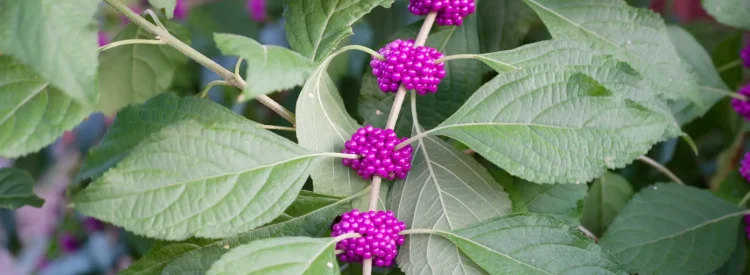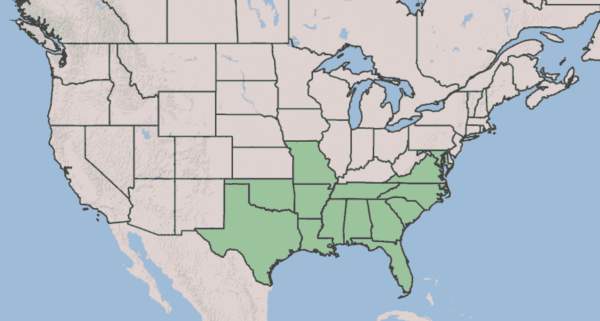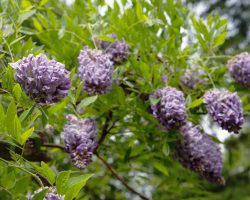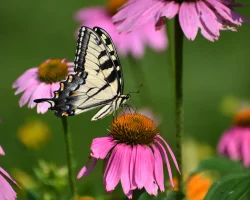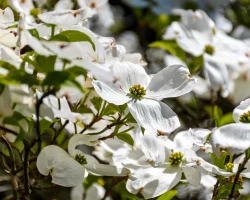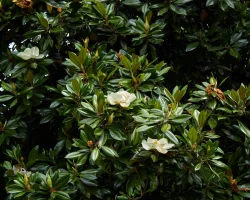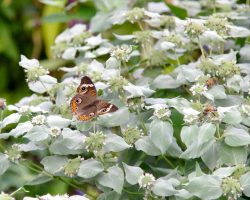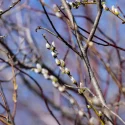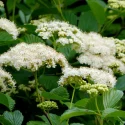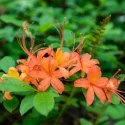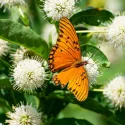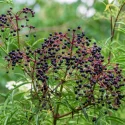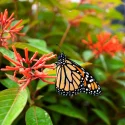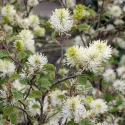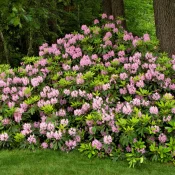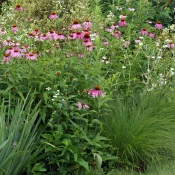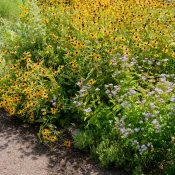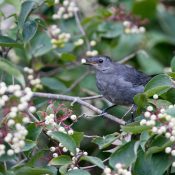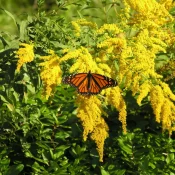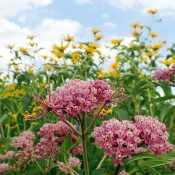American beautyberry is a gorgeous shrub native to the southeastern United States known for its electric purple berries that appear in the late summer/early fall. The berries look like candy for birds and can last on the branches through the winter. They are fast growers, like sun to part sun, and can get 4-6 feet tall. This was once one of the most common shrubs in the south—let’s bring it back! Discover planting tips and varieties below.
Is American beautyberry a good choice for my yard?
Yes—if you’re looking for something both beautiful and forgiving. American beautyberry thrives in full sun to part shade and tolerates a range of soils, from clay to sandy loam. It’s happiest in spots with consistent moisture but good drainage.
This shrub looks spectacular as:
- Stand-alone accent (especially near patios or entryways),
- Part of a wildlife or pollinator border, or
- Mixed native hedge with other shrubs like viburnums, ninebark, or witch-hazel
If you want a plant that earns its keep through every season—and helps wildlife while doing it—American beautyberry is a perfect fit.
Why American beautyberry matters
American beautyberry does more than brighten your yard—it helps birds, pollinators, and the planet right outside your door. Native plants like this one make gardening easier and more meaningful.
- A feast for wildlife. The bright purple berries are a fall and winter lifeline for songbirds, while summer flowers draw in pollinators.
- Easy and low-maintenance. Once established, American beautyberry needs little more than rain—no fertilizer, no stress.
- Seasonal drama. Pale green spring leaves, soft summer blooms, and vivid fall berries give your yard year-round color and texture.
- Good for your ecosystem. Every native plant rebuilds local habitat, turning your yard into part of the solution.
New to native?
Before lawns and landscaping, native plants were here. They’ve fed birds, bees, and butterflies for thousands of years—and they’ll do the same in your yard. The best part? They’re easier to grow than you think.
What is American beautyberry’s native range?
American beautyberries are native to the Southern United States, from Virginia south to Florida, and west to Texas. While this is the plant’s native range, due to climate change, American beautyberries now thrive in more northern places—like Pennsylvania and Illinois.
American beautyberry throughout the seasons
No matter the season, American beautyberries look gorgeous.
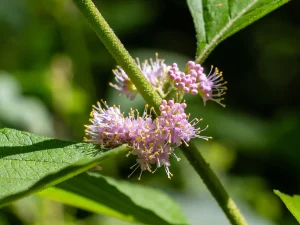
Spring
In the spring, American beautyberries send out bright green leaves and cover their stalks with tiny fairy-like purple flowers.
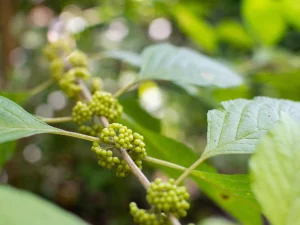
Early Summer
In the early summer, American beautyberry flowers give way to green berries, which then change to purple in a gorgeous gradient.
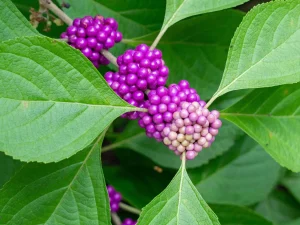
Late Summer into Fall
In the summer and early fall, the berries turn on their neon purple show alongside green leaves.
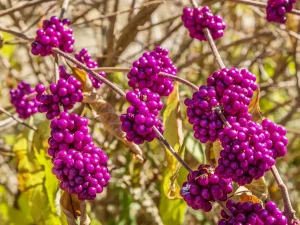
Winter
In the fall in northern climates, the leaves change to a warm yellow before they fall. In more southern locations like Florida, the leaves remain evergreen. The electric purple berries remain on beautyberry's stem, making it easy for songbirds to find a snack. And then back to the beautiful fairy-like flowers all over again in the spring.
NC State Extension shared a great overview video of the plant throughout the seasons, including its fairy-like spring blossoms.
Stay away from non-native beautyberries
Many plants have native and non-native species; azaleas, lilies, rhododendrons, and wisteria are examples of plants with family trees spread across North America, Europe, or Asia. Four species of beautyberry are often sold in nurseries, and only one species is native to North America.
- American beautyberry (Callicarpa americana) is the North American native species
- Japanese beautyberry (Callicarpa japonica), no surprise, is native to Japan
- Chinese beautyberry (Callicarpa dichotoma) — many cultivars in nurseries come from this plant
- Bodinier’s beautyberry (Callicarpa bodinieri) is also native to China
How can I make sure I’m planting a native American beautyberry?
Look at the tag—Latin names were invented precisely for this purpose. Every plant has only one Latin name. The native beautyberry plant you’ll want to buy is named:
Callicarpa americana
If it doesn’t include this Latin name, be wary.
How else can I tell if the beautyberry is native?
There is one other way to check the native vs. non-native: look at the berry stems. (Sincere thanks to Cassandra from Kentucky for sharing this tip!)
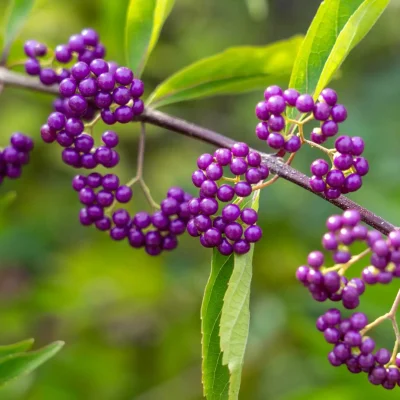
Non-native beautyberry
Do the berries hang off stems? That is the telltale sign of one of the Asian species.
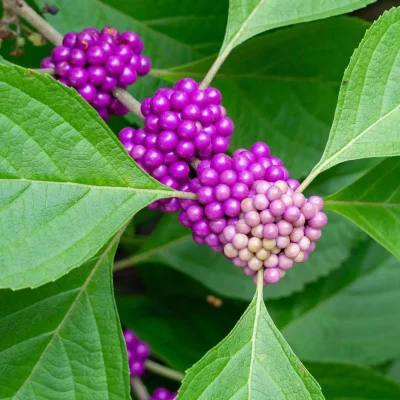
Native beautyberry
Do the berries hug the stem in beautiful round orbs? That's a North American Callicarpa americana.
Finally, to be sure you’re planting native, visit a native nursery. Visit our list of 100+ native nurseries across America.
Where American beautyberry shines in your yard
American beautyberries are so easy to grow because they do well is lots of different areas:
- Full sun to part-sun
- Minimal care after the first year of getting established
- Plant them underneath trees on the edges of your property or in the center of gardens with shorter plants in front
Plant a few, together!
American beautyberries look especially awe-inspiring when planted in multiples. Plant a few if there is a sunny or part-sun area along your driveway or at the edge of your yard.
Bird-watching bonus: If you plant them near a window view, you can watch the birds eat the berries throughout the fall and winter.
No pesticides or herbicides
Avoid using pesticides or herbicides near American beautyberry plants, as they can harm the birds and pollinators that visit the plant.
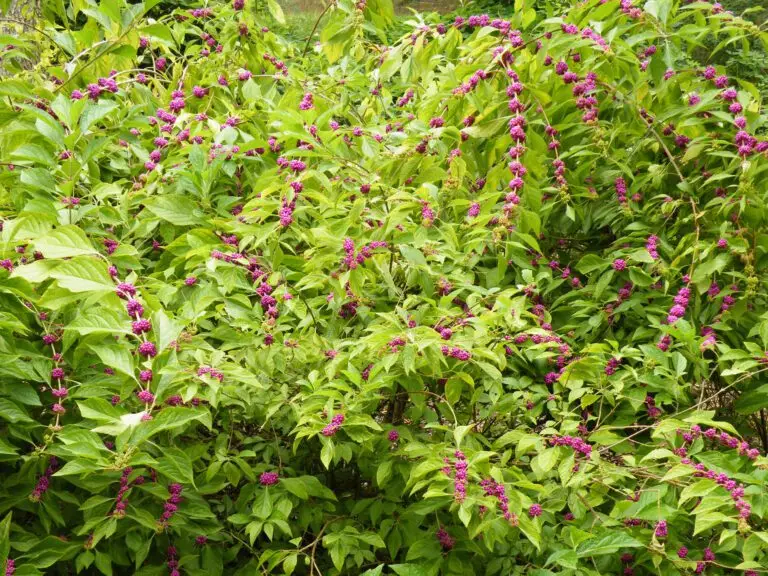
FAQs
Can I grow American beautyberry by seed?
If you’re patient, you can grow American beautyberry by seed. It will take a few years for the plant to reach bushy size. To plant by seed:
- Take some of the bright purple berries in the fall
- Plant them directly in the garden, 1/2″ deep
- Wait 3-5 months
- Shoots will emerge in the spring
Can I grow American beautyberry by cuttings?
Yes! You can grow American beautyberry by cuttings in the spring. To grow from a cutting:
- Wait until the spring
- Cut 4-6-inch stems from a healthy plant
- Dip the bottom tip of the cutting into rooting hormone before planting (if needed, you can remove the leaves on the bottom to help place them in the dirt)
- Place the cuttings in small pots with an all-purpose soil mix (nothing fancy is needed)
- Keep your cutting in a warm place indoors in bright, indirect light
- The cutting should begin to grow 2-3 weeks after planting
- It will be ready to plant in your garden 2 months later!
According to the 1925 edition of North American Wildflowers, the American beautyberry (Callicarpa americana) “is one of the most common plants of the Southern States.” Imagine that: entire Southeastern landscapes shimmering with electric-purple berries in the fall.
The same book noted that this native was “much more showy than the related Asiatic species, but rarely cultivated.” A century later, that still tracks—though we’re finally catching up. Once found from Florida to Virginia and west to Texas and Missouri, American beautyberries thrive farther north, due to climate change and a new generation of gardeners who appreciate bold, low-maintenance color.
This isn’t a comeback story—it’s a homecoming.
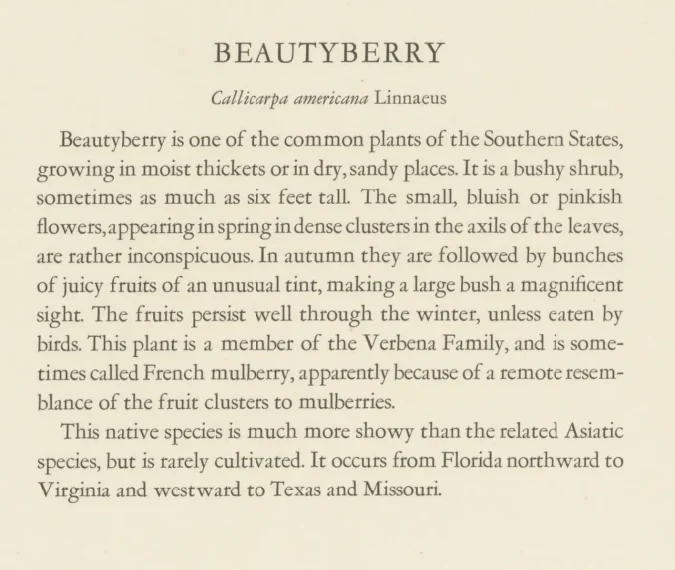
Where can I find American beautyberry plants?
As you look for American beautyberry, we have a tip:
Plants and seeds grown close to home are tuned to your soil, weather, and pollinators. Stay within 500 miles—or about a day’s drive—to help your garden thrive naturally.
For example, an American beautyberry from southern Florida will not have the same genetic makeup as one from Virginia—and that difference matters.
That’s why The Plant Native lists the state or province of every nursery and online store we recommend:
Where can I find seeds and plants?
Finding native plants can be challenging (we partly blame Marie Antoinette.) To make it easier, we’ve assembled four sourcing ideas.
300+ native nurseries make finding one a breeze
Explore 100+ native-friendly eCommerce sites
Every state and province has a native plant society; find yours
Online Communities
Local Facebook groups are a great plant source
What pairs well with American beautyberry?
American beautyberries look fantastic alongside native shrubs such as azaleas, mountain laurel, rhododendrons, and sweetshrubs. If you have a fence or trellis nearby, plant the native vines coral honeysuckle or American wisteria. If you live in the South, check out native passionflower vines. If you want to plant a multi-month butterfly buffet (and who doesn’t?), plant milkweed, coneflower, mountain mint, and asters. Or visit our Guide to Native Host Plants for Butterflies.
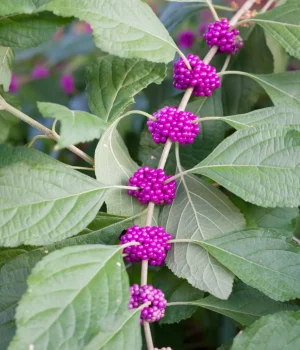
Pairs well with
We hope you’re inspired to add a splash of electric purple to your landscape with American beautyberry. Not only is this native shrub stunning to look at, but it’s also a great way to support local ecosystems. By following our growing and care tips, you can easily incorporate this hardy and beautiful plant into your garden or park. Where to next? How about keeping the birds happy with our Guide to the Best Native Plants for Birds. Or, zhoosh up your yard with our Best Native Trees for Front Yards. Looking for fall beauty? Skip the mums and head to our Beginner’s Guide to Native Asters. Happy planting!
Sources
- Gil Nelson. Best Native Plants for Southern Gardens: A Handbook for Gardeners, Homeowners, and Professionals. (2010).
- NC State Extension, American Beautyberry
- NC State Extension, Japanese Beautyberry
- Brakie, M. 2010. Plant fact sheet for American beautyberry (Callicarpa americana). USDA-Natural Resources Conservation Service, East Texas Plant Materials Center. Nacogdoches, TX, 75964. (PDF).
- Chadwick, Pat. Piedmont Master Gardeners, Callicarpa (Beautyberry). October 2015.
- USDA Plants Database, Callicarpa Americana. n.d.
What if your feed was actually good for your mental health?
Give your algorithm a breath of fresh air and follow us.
